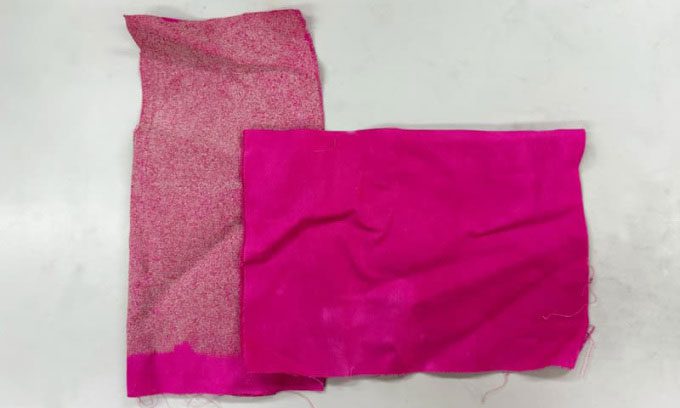In a recent experiment, cotton fabric coated with nano-diamond from RMIT University Australia helped reduce temperatures by 2 – 3 degrees Celsius compared to untreated fabric.
The world has seen the emergence of clothing materials designed to keep the wearer cool by allowing heat to dissipate. A team of scientists at RMIT University Australia, led by Dr. Shadi Houshyar and Aisha Rehman, developed a new fabric coating that offers improved heat reduction thanks to nano-diamonds, as reported by New Atlas on February 14. The research was published in the journal Polymers for Advanced Technologies.

Nano-diamond coated (left) and uncoated (right) cotton fabric. (Photo: Cherry Cai/RMIT University).
Unlike regular diamonds, nano-diamonds are not expensive. They are tiny diamond particles that can be easily produced at a low cost, possessing an internal “carbon network” structure similar to that of conventional diamonds. This structure, along with other factors, gives them exceptional thermal conductivity.
In the new study, the team mixed nano-diamond powder with polyurethane and a solvent. They then applied the resulting solution to one side of a standard cotton fabric using an electrospinning technique.
Once dried, this solution formed a coating consisting of a network of nano-fibers linked to larger cotton fibers. If this fabric is used for clothing, the nano-diamond side will face the wearer’s skin, while the uncoated outer side prevents the fabric from absorbing heat from the surroundings.
The team placed the fabric samples with the uncoated side facing a nearly 100 degrees Celsius hot stove for 10 minutes, then removed them and allowed them to cool for another 10 minutes. They found that compared to untreated cotton fabric samples, the nano-diamond coated fabric released heat 2 – 3 degrees Celsius more during the cooling period.
The treated cotton fabric also provided better protection from ultraviolet rays for the wearer. Although its breathability and moisture-wicking capabilities are not as good as untreated cotton, they remain within acceptable levels.
“A change of 2 – 3 degrees Celsius may not seem significant, but it makes a difference in comfort and long-term health impact. In fact, it could be the difference between turning the air conditioning on or off. Additionally, nano-diamonds also hold potential for research to help reduce heat in buildings, providing environmental benefits,” Houshyar said.


















































